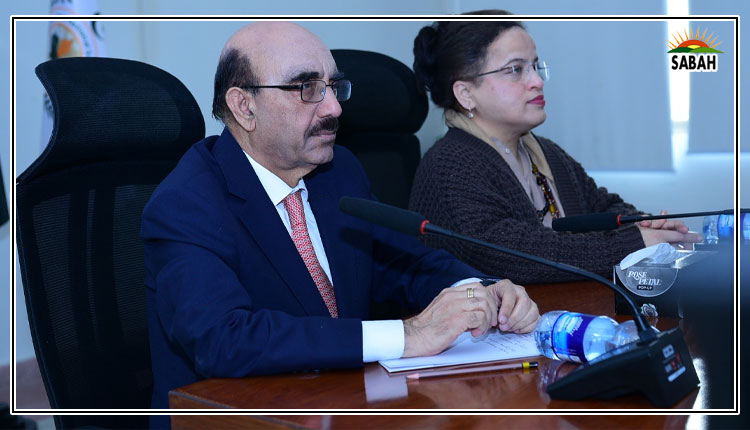Accelerating enrolment…Zahra Niazi
Today, millions of Pakistanis find themselves struggling to make ends meet as Pakistan grapples with a challenging economic landscape.
Against this backdrop, the International Monetary Funds (IMF) recent report on Pakistan while acknowledging the authorities efforts to improve social protection and reduce poverty underlines the need to strengthen social spending further to protect the most vulnerable, catch up with peers level of socioeconomic development, and increase the countrys growth potential.
Among other things, it suggests accelerating enrolment in conditional cash transfer (CCT) schemes under the Benazir Income Support Program (BISP) to improve health and child education and increase girls school enrolment.
Cash transfer schemes differ in whether they are conditional requiring specific actions from beneficiaries (eg making regular health visits, sending children to school, etc) or unconditional, without any strings attached.
Pakistan currently has three major CCT programmes, including the Benazir Taleemi Wazaif requiring the beneficiary children to attend schools; Benazir Nashonuma requiring the beneficiary mothers to consume specialized nutritious food, attend regular antenatal health checks and take their children for regular check-ups and immunisation; and the Benazir Undergraduate Scholarship project providing need-based and merit scholarships for undergraduate education.
Theoretically, attaching conditions to cash transfers is a cost-effective practice as it ensures that the resources are utilized for productive purposes. A large body of evidence, particularly from middle-income Latin American countries, has testified to the positive impact of CCTs on beneficiaries school attendance, health and nutrition in the short term.
In Pakistan as well, the achievements of the CCT programmes in enhancing child school enrolment, empowering women and children, and expanding higher education have been documented. Despite this, it is pertinent that any decision to accelerate enrolment in these programmes is carefully considered or implemented in combination with supplementary initiatives.
In Pakistan, service delivery gaps constitute a significant barrier to accessing education and healthcare services, which can potentially affect the outcomes of a rapidly expanded CCT programme. For instance, uneven distribution of teachers across schools, an inadequate number of qualified teachers, especially subject specialists, long distances to schools, and safety-related issues are some of the major impediments to increasing education uptake, particularly in the relatively disadvantaged localities within the country.
In contexts where a large gap arises between CCT-induced rise in demand and the supply of services, CCTs may have limited or no impact or, at worst, be counterproductive (eg when it leads to declining quality of education for all due to an increase in teacher-pupil ratios or large and unintended out-of-pocket expenses due to high travel costs).
A case in point is Moroccos Tayssir Programme, which included cash payments to encourage parents to send primary school-age children to schools. One study found that this initiative had no significant effect on the Moroccan children whose participation was assigned under the eligibility rule and attributed it to challenges such as the inaccessibility or remoteness of health and education services.
According to another study, while the programme increased school enrolment, it constrained overall learning among boys as the educational resources were insufficient to absorb the additional influx of students.
Significant challenges may also arise on the demand side due to certain cultural practices and traditions, such as the lack of trust in doctors and medical organizations or norms that favour keeping girls confined to the home. Additionally, an insufficient government capacity to design, implement, and monitor the conditionalities may also influence the effectiveness and sustainability of a scaled-up CCT programme by making it too costly or complex to implement.
In Pakistan, a precedent in this respect already exists. In 2015, the government discontinued (before resuming it again) the BISPs CCT component after a few years of its implementation due to inadequate monitoring and a lack of proper programme design.
A comprehensive feasibility and cost-benefit analysis will have to be undertaken to enable policymakers to make more informed decisions with respect to accelerating enrolment in CCTs. Ideally, the exercise should be participatory, involving local communities. This will serve as a guide to assessing which supplementary initiatives (eg, parental awareness sessions, teacher trainings) are required for the programme designs to be more impactful and whether diverting the resources for supply-side interventions or alternative social protection schemes can have a more mutually beneficial impact.
An important consideration must be that the findings may not be easily generalizable, and an assessment should be undertaken in contrasting contexts as CCTs may be well-suited within certain contexts compared to others. Similarly, one form of CCT could fit a particular context or region compared to another. The end goal should be to rationalize and consolidate government funding for maximising the welfare and empowerment of disadvantaged communities.
Courtesy The News











